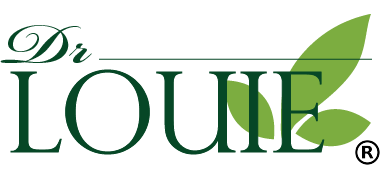
Vitamin C, they are not the same! Which is then? Ascorbic Acid!
|
Time to read 4 min


|
Time to read 4 min
Vitamin C is making a comeback as a popular anti-aging skincare ingredient. It is said to increase collagen, reduce skin pigmentation and reduce UV damage by free radicals. Because it’s becoming popular once again, there are so many different Vitamin C products with different prices. But not all vitamin C are the same: they differ in type, concentration, ingredients combined and the bottle or dispenser used.
Out of many different types of vitamin C, the most-clinically tested and potent form of antioxidant is ascorbic acid (or L-ascorbic acid). It is a natural form of Vitamin C. But it tends to be unstable when exposed to water and oxygen: It becomes oxidized, meaning it turns brown. Just think of a cut apple slice turning brown when exposed to oxygen.
To cancel out the oxidation (browning) effects, synthetically-stabilized forms of vitamin C were made, such as sodium ascorbyl phosphate, ascorbic acid polypeptide and sodium ascorbyl palmitate. These forms of vitamin C are stable and are said to have the same benefits as ascorbic acid.
You may wonder, if these synthetically-stabilized forms of vitamin C are just as effective as ascorbic acid and they are stable, then why use ascorbic acid?
That’s because it is a very potent form of vitamin C. If formulated expertly and correctly, it has the most potential to transform our skin rapidly. Although ascorbic acid is known to be unstable, it’s precisely this instability that gives this form of vitamin C its clinically-proven effectiveness and potency as an antioxidant.
When unstable, ascorbic acid has every reason to want to react to whatever it comes in contact with, including free radicals attacking our skin. This reaction with free radicals is what protects our skin from them.
On the other hand, stabilized vitamin C has little incentive to react to free radicals, weakening its protective effects, unless it is used with other ingredients that are high in vitamin C content.
But, as mentioned earlier, this instability also means that the product may change colour from slight yellow to orange, brown and eventually to black. Change in colour does not damage the skin, but it does mean that active ingredients in the product are oxidizing and are no longer effective.
That’s why concentration and storage of vitamin C serums is so important.
If the concentration is high, then no matter how much it oxidizes, it will still have enough active ingredients to be effective.
Generally speaking, ascorbic acid is said to be effective at 10-20% in concentration. But because it is so potent, it can be irritating to those new to ascorbic acid or those with sensitive skin.
So to avoid skin irritation, begin with a low concentration of 10% and increase to 15% or 20% as tolerated. Or you can try putting a small amount first on your face in low frequency first and gradually increase amount and frequency as tolerated.
For example, you can start by using it at night every other day and if your skin adapts to the serum, you can use it every day.
But if you have normal skin, look for one with 20% in concentration with a low pH of approximately 3.5, like our Vitamin C Serum, for optimal absorption and maximum benefits.
As for storage, it must be kept in an opaque or amber or brown coloured bottle like the picture above to keep off light which would prevent oxidation and colour change. Keeping vitamin C bottles in a cool, dark place is best to maintain its stability. Keeping it wrapped up in foil also helps!
Typically, it takes about 3 months for ascorbic acid to turn brown. But as mentioned earlier, as long as the concentration is high, it is still effective. So no need to worry!
It is also a good idea to split your vitamin C serum into smaller opaque bottles and keep the larger bottle in the refrigerator (at around 15 degrees celsius). This is not essential if you keep your serum in a cool, dark place, but this step will definitely help to keep your serum fresh and effective.
Another important thing to look for when selecting a vitamin c serum is the ingredients combined.
Typically, vitamin c is said to work well with other potent antioxidants, such as ferulic acid and vitamin e. These enhance the antioxidant effects of vitamin c.
If you have specific skin concerns, such as a dry, mature skin or sensitive skin, it is important to look for other ingredients that work in synergy to protect the skin against irritation and dehydration.
For example, panthenol, also known as vitamin B5, is known as an excellent moisturizer and very effective in reducing irritation while improving skin barrier function. Used together with ascorbic acid, it soothes and regenerates irritated skin.
For dry and mature skin, ingredients such as water-loving hyaluronic acid, aloe vera or CoQ10 along with ascorbic acid will help to keep the skin moisturized and supple.
Then, how can you take full advantage of ascorbic acid serum? You can use it both night and day. But as I mentioned earlier, it is photosensitive, so it should be used in conjunction with broad-spectrum UVA/UVB coverage.
If it is layered under a broad-spectrum sunscreen with a minimum of SPF 30, such as our Protection Cream, your vitamin c serum can protect the skin even further by offsetting free radical damage caused by the sun. And generally, it should be layered underneath any moisturizer you use to ensure that your serum fights off free radicals well instead of being oxidized.

